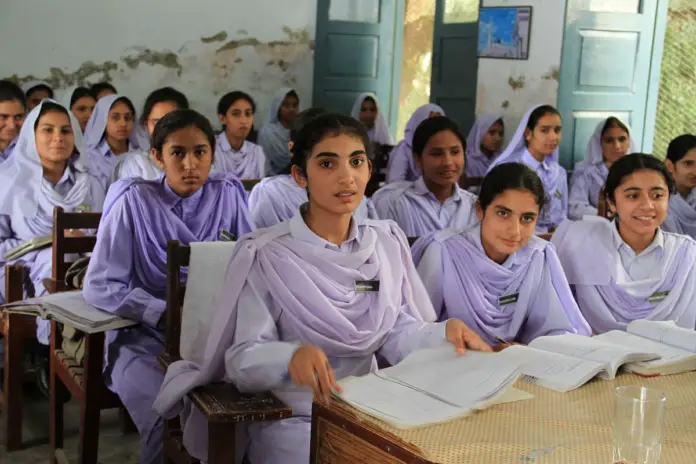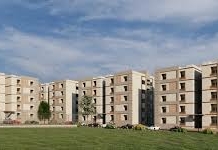The federal budget 2022-2023 is envisaged at Rs12,400 billion out of which current expenditures will be Rs11,400 billion. Out the current expenditures, Rs530 billion (4.65%) would be spent on civil pensions and another 8.65% on military pension. A total of 13.3% of the budget on pensions, or on that part of the ‘past’ population that are not productive anymore and Rs90 billion (0.8%) on education, or on the productivity of our future generation that have to, in the future, contribute to the productivity of the economy and the GDP growth rates through different employments and self-employments in the country.
On the Enrolment side, according to Economic Survey of Pakistan 2021-2022, 25.7 million children were enrolled in Primary classes (I-V). Out of these 11.7 million (45.5%) were girls. It is interesting to note that only 8.25 million went up to the next level (Middle stage of VI-VIII classes), out of which 3.8 million (46.0%) were girls and only 2.5 million passed their matric (class X) and reached inter-level. Out of those who passed, 1.3 million (52%) were girls. In other words, out of a total of 25.7 million children enrolled in primary classes, only 2.5 million reached matric levels, or more than 23 million children (45% girls) drop out of the mainstream educational system due to various reasons. The data for universities shows that a total of two million students were admitted to the universities of Pakistan, out of which 0.84 million (42.0%) were females.
Total current expenditures of Punjab government in 2022-2023 will be Rs1,712 billion, out of which Punjab will spend Rs88.6 billion on education and the development expenditure will be Rs685 billion, out of which Punjab government will spend Rs48.5 billion on education. This will be a total of Rs137.1 billion (5.7%) on education from a total Punjab budget of Rs2397 billion.
Total current expenditures of Sindh government in 2022-2023 will be Rs1,200 billion, out of which Sindh will spend Rs297 billion on education and the development expenditure will be Rs460 billion, out of which Sindh government will spend Rs38 billion on education. This will be a total of Rs335 billion (20%) on education from a total Sindh budget of Rs1,660 billion.
Total current expenditures of Khyber Pakhtunkhwa government in 2022-2023 will be Rs872.54 billion, out of which KP will spend Rs56.7 billion on education and the development expenditure will be Rs418.2 billion, out of which KP government will spend Rs8.63 billion on education. This will be a total of Rs65.33 billion (5.9%) on education from a total KP budget of Rs1,291 billion.
Total current expenditures of Balochistan government in 2022-2023 will be Rs343 billion, and the development expenditure will be Rs246 billion; a total Balochistan budget of Rs613 billion. The details on education spendings are as yet not available.
Total expenditure on education by all federal and provincial governments in Pakistan (except Balochistan) in 2022-2023 would be Rs627.43 billion. Federal government will spend 4.65%, Punjab 5.7%, KP 5.9% and Sindh 20% of their respective budgets on the education of their children. It seems government of Sindh is more concerned about education of its future generations than any other government in Pakistan.
Almost 70% of the educational institutions in Pakistan are in the public sector and 30% are in the private sector (Hussain, 2015). Also, there are madrassas teaching only Quran based religious education, upper end private schools teaching in English and catering for O and A levels Cambridge exams, government schools teaching in Urdu or regional languages and catering for matric exams and vocational institutes for a few hundred thousand poor children catering for the industry through skill certifications. Other major issues in the education system of Pakistan are teachers untrained or unqualified in modern teaching methodologies, substandard textbooks, and outmoded teaching methodologies, also as most of these schools lack building, infrastructural, toilet facilities, transport etc. Therefore, dropout ratio in these schools is very high.
Some recent key facts on education in Punjab prior to the COVID-19 pandemic were that 22.8 million children of school-going age in Pakistan were not in schools. The majority of these out of-school children are girls. According to conservative estimates by the World Bank, at least one million more Pakistani children in addition to previous 22.8 million are likely to drop out of school by the end of the pandemic.
According to the Pakistan Bureau of statistics (PSLM 2019-20), 16% urban while 28% rural children of Punjab are still out of school whereas the percentage of out of school children is increasing. Rajanpur is the least performing district where school attendance is only 40%. Pakistani children currently spend 9.1 years in school on average, but they only accumulate 5.1 years of learning due to low quality of the school system. The simulations suggest that this number could fall to between 4.8 and 4.3 years by the time schools have fully reopened after COVID-19.
It is also feared by specialists and educationalists, that because of recent price hike in petrol, many of the lower middle-class parents in urban and rural areas would not be able to send their children to school after the summer vacations and usually the axe falls on the girls. Also, Punjab Assembly and the cabinet have still failed to enforce free education bill, that is lying with the governor and both PTI and PML-N governments have failed to give a timeline for its enforcement.
Education is key to making a person capable in expressing his or her individual choices and becoming empowered towards economic and political decision-making in their household, community and the country. Education not only enhances intellectual capabilities of a person, but also if proper training is given, enhances their skills, productivity and income earning capabilities. In Pakistan, education has been on a lower step in the priority list of the policy makers.
Education is key to making a person capable in expressing his or her individual choices and becoming empowered towards economic and political decision making in their household, community and the country. Education should give a person a world vision, scientific thought process, and better employment or business opportunities as enhanced choices. All education and teaching should give productivity and creativity to students, communication skills and IT skills to students, scientific knowledge and analytical skills to the students, team work and leadership skills, and citizenship behaviors that cater for human rights, legal environment and protecting of natural and man-made assets of the country. The question can be asked what the 30% to 60% youth (almost 110 million) that are either illiterate, or have very little schooling, or do not have access to the modern productive techniques and work habits required for the next 80 years of the 21st century, are going to face.
Pakistan’s policy makers should realize that the basics of the present economic crisis is that its labor force, especially its youth, is not productive or innovative, and if the situation remains that they cannot contribute substantially to our GDP both as investors or labor, then whatever the policies, Pakistan cannot come out of its present predicaments and we as a nation would carry on depending on foreign ‘aid’ rather than standing on our own two feet. We will have to depend on our youth to produce, earn an income and become exportable in terms of goods and services.







